#exanimate
Explore tagged Tumblr posts
Text
Taking some inspiration from @bonkalore and drew one of my innocent characters as a suddenly larger version of themself.
He’s just scared and confused, luckily his surrogate family and his poofy haired friend do their best to help him out (don’t worry, it’s only temporary)
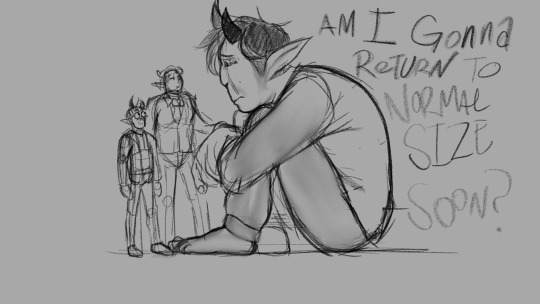
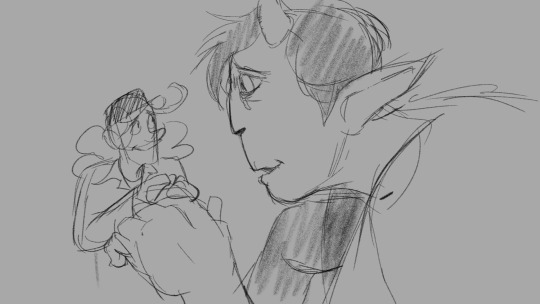
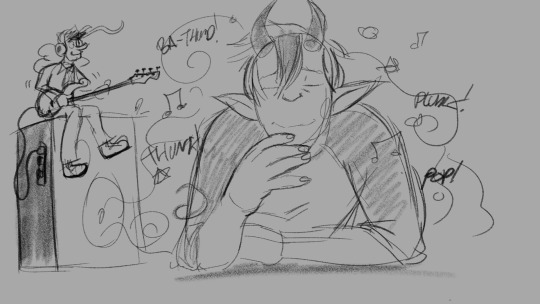
49 notes
·
View notes
Text



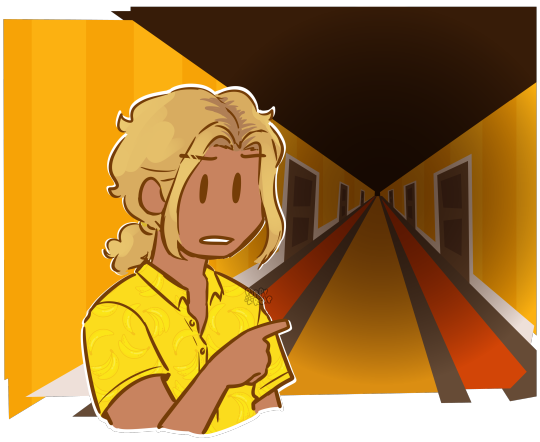
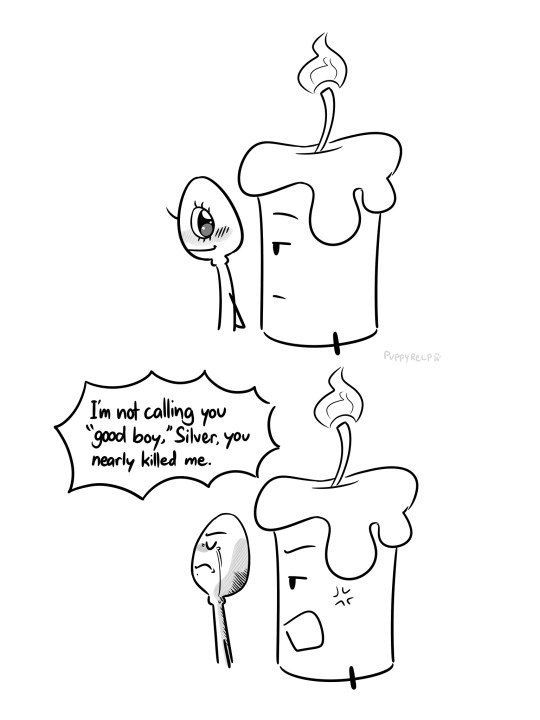

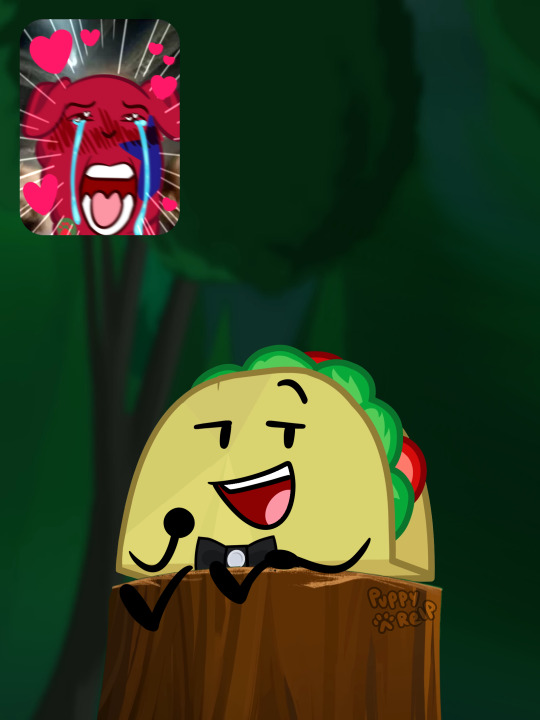

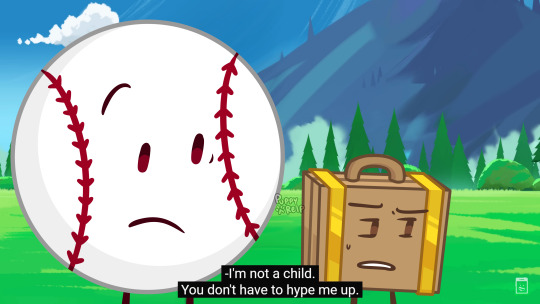
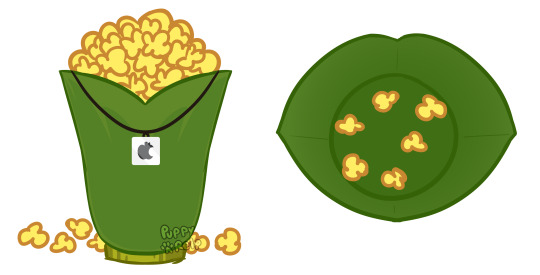
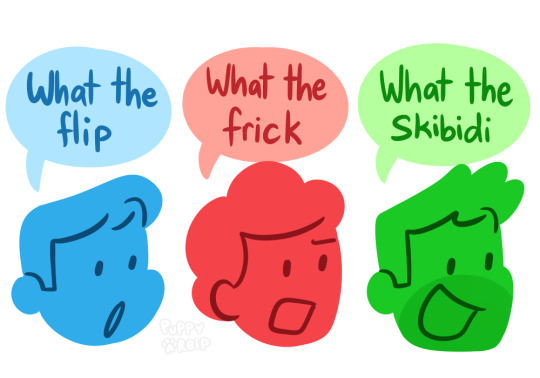

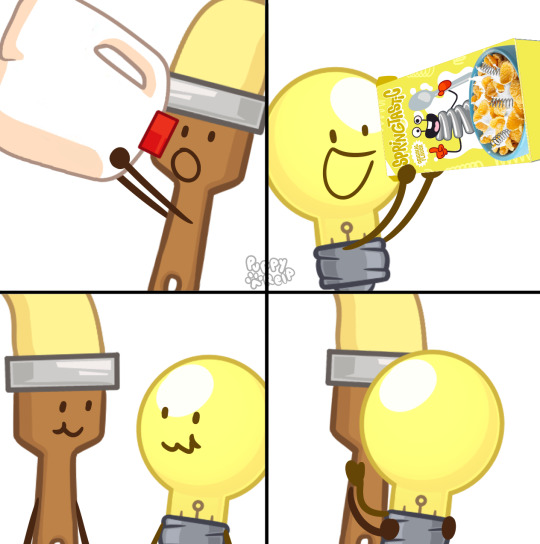
ii art dump part five !
#inanimate insanity#day 5 of posting in the ii tag to boost it in the tumblr tag thingy#ii lightbulb#lightbulb ii#ii paintbrush#paintbrush ii#lightbrush#lightbulb x paintbrush#paintbrush x lightbulb#ii steve cobs#steve cobs ii#ii suitcase#suitcase ii#ii baseball#baseball ii#ii taco#taco ii#exanimate insanity#ii candle#candle ii#ii silver spoon#silver spoon ii#ii trophy#trophy ii#ii test tube#test tube ii#ii fan#fan ii#relpyart#ii marshmallow
1K notes
·
View notes
Text
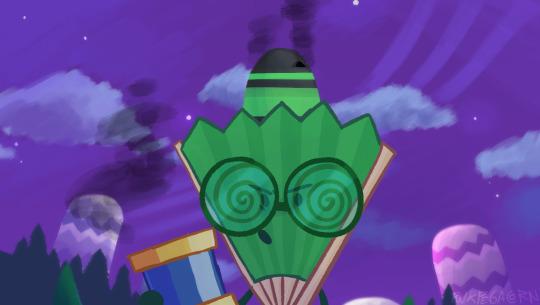
a request from discord - a scene from hatching the plan redrawn with exanimate insanity fan! @puppyrelp
57 notes
·
View notes
Text
found out about exanimate insanity today and sketched this up rq very neat au @puppyrelp !!! :DDDD

#inanimate insanity#exanimate insanity#ii#ei#ii salt#ei salt#ii bomb#ei bomb#ii18 spoiler#sorta#just a bit#art
28 notes
·
View notes
Text
👀 uh oh. (Looks at story where human-turned demons are the majority of the undead population)
I think I’m in too deep…
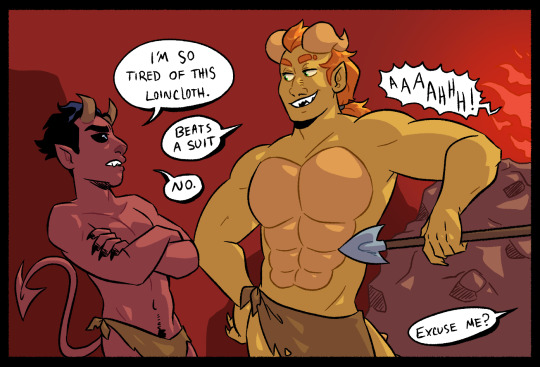
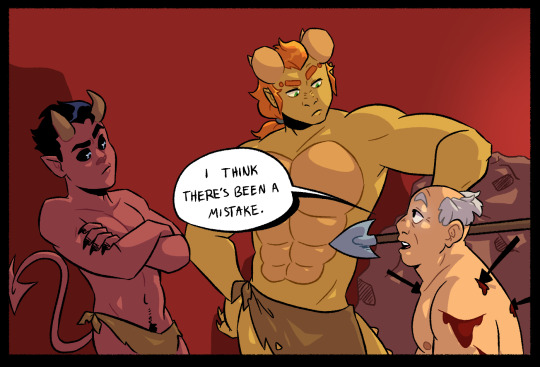
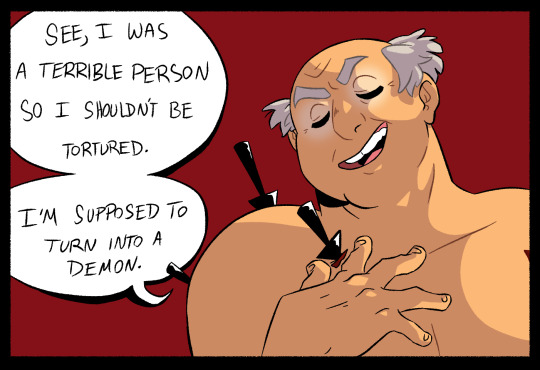
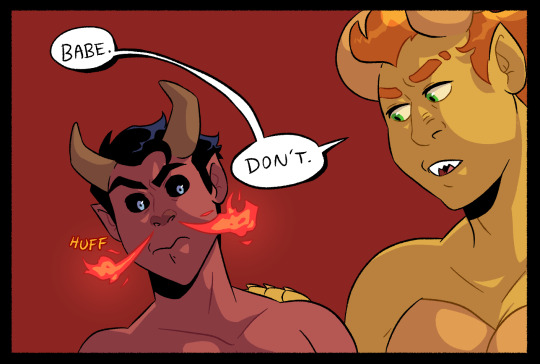
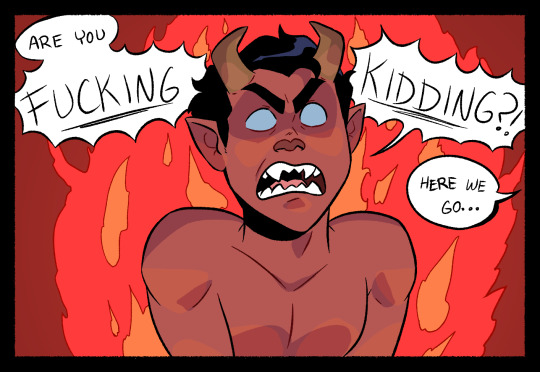
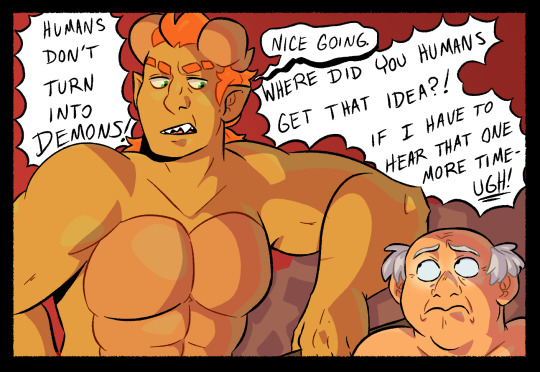
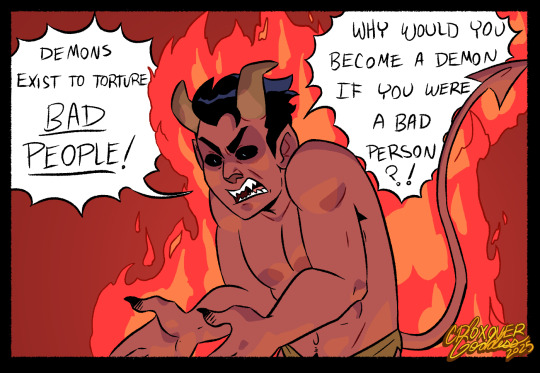
WHO STARTED THAT STUPID RUMOR??
927 notes
·
View notes
Text
recreated my favorite ii scene of all time as swap au <3 @puppyrelp


#exanimate insanity#inanimate insanity#inanimate insanity au#inanimateswap#ii au#ii test tube#ii fan
75 notes
·
View notes
Text
II1 Final Five but EI

Salt, Taco, Paper, Pickle, and OJ!
About the same... except roles are swapped.
25 notes
·
View notes
Text
dumb joke and also an excuse to draw a bunch of nickels!

Divorce Swap is by maxphilippa and @burgycreeper405-blog
GKGG is by @maxphilippa
IISwap is by me! Lol
Exanimate Insanity is by @puppyrelp
IIShift is by @velvelic
yeah i had a little too much fun with this dumb joke
#rocket talk#roc save#art#my art#nickel ii#ii nickel#balloon ii#ii balloon#inanimate insanity#ii divorce swap au#ii gkgg au#inanimate insaniswap#iiswap#iiswap au#exanimate insanity#insaniswap insanity#iishift#inanimate insanishift#so many tags........
117 notes
·
View notes
Text
EXAMIMATE INSANITY I OOVE THIS AU
au from @puppyrelp
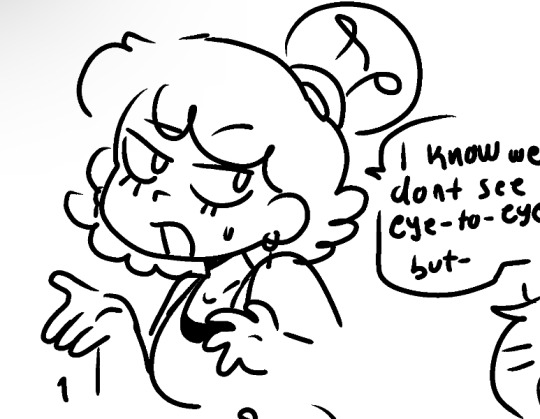
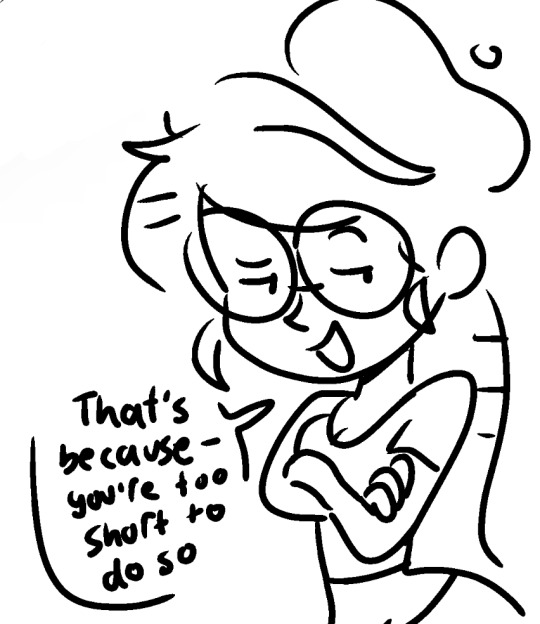

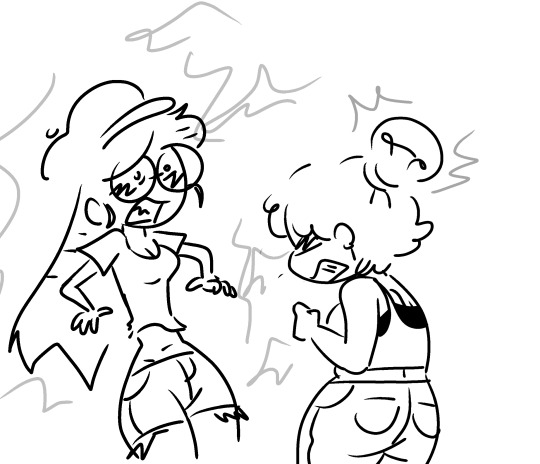

I lobe thrse 4
I made my own human designs <3
#inanimate insanity#ii lightbulb#ii paintbrush#ii fan#ii test tube#YGH I LOVEV THEM#exanimate insanity
42 notes
·
View notes
Text
F*** it, we doing a small Batman story with my fellas.
Batman surveyed the city skyline, the rain pelting his suit as he observed over a seemingly quiet night.
Suddenly he heard a tearing noise from behind him. He quickly turned around, batarang in hand and saw what looked like the sky itself being torn open in a glowing inferno, the edges seemingly in a constant state of burning. It hung just a few feet away from him.
He held his pose when he saw something- no someone, fall from the portal
——
Levi fell and hit the ground hard.
The pain wasn’t bad, just the sudden fall and ass landing was unpleasant. The was an audible crunch heard, but nothing felt broken.
Levi opened eyes to see the portal close, mending the dark overcast skies. He felt the rain hit his face.
He sat up and held his head in his hands, getting his bearings. He looked up and saw he somehow ended up on a rooftop of some kind. He stood up to see more.
A sprawling city with misery and gloom permeating everything in sight.
He was so transfixed on his surroundings, he didn’t notice the large figure approaching him. Not until he spoke.
“Who are you? And where did you come from?” Demanded a booming voice.
Levi yelped in surprised and whipped his head around until he locked eyes with- a man in some sort of costume. He had blue eyes and a black cowl that had points jutting upwards out from it. Kind of like… bat ears? Guess that would kinda explain the large symbol on his chest. He also noted the weapon in his hand. A knife? A boomerang? He was befuddled.
“Wha-“ he muttered.
The costumed man asked “Answer me.”
Levi flinched “wuh- I- I am Levi. Levi Morris.” His arms reflexively shot up in a defensive manner as he cowered away. “and I- I came from- uh… the afterlife.”
There was a pause. Levi took in labored breaths.
——
Batman took in the demon’s words. He glared down at the being shielding themself.
He knows when someone is scared, especially if they’re innocent
But their skin… and the horns…
——
“Are you a demon?” The man asked, in a more quizzical tone.
Levi hesitated, reaching up to feel if his horns were still visible. “y-yes sir.” He admitted
He closed his eyes, preparing for some form of assault. The rain was soaking through his clothes as he stood there.
——
Batman’s grip on his batarang tightened as he asked his next question, this will determine how he’ll proceed next.
——
“Are you a threat?” The voice asked, less booming but still stung with a tone of seriousness.
There was a brief pause.
“N-no sir. I-I am not.” Levi responded “I was just m-minding my business when- uh… I do not know how to explain it… uh, wait Luis!” Levi straightened up “Luis could explain it” his hands fumbled for his pockets, he the pulled out his phone “my- my friend Luis can-“
he stopped when he saw the cracked phone screen, he clicked the home button, the unresponsive black mirror reflecting its inoperative state collecting rain droplets.
His mouth hung agape.
——
Batman finally could see the demon’s face.
Its eyes were green and soft, cat like in apperance.
He put the batarang away.
This was not a threat.
——
“Oh…I- I can not call him.” He finally said as he put the phone back and hung his head in disbelief.
Levi could feel the tension from the costumed man lessen, empathy?
He slumped to his knees. “If I cannot call him, he cannot get me back home.” He brought in his chest to his knees. “Oh, why did I have to fall through the portal?”
Levi stifled a cry when he realized the rain had stopped falling on him. He glanced up to see the costumed man holding up his cape over him, shielding him from the rain.
“If your phone gets repaired, can you return home?” He asked.
Levi nodded “y-yes sir.” He sniffled as he found the strength to stand up. “C-can you help me?”
The man stared at him before bringing his free hand to his ear “Alfred, I’m dropping someone off at the cave. I’ll be helping him but but I need Oracle. I’ll be back after my patrol, please see to it he is taken care of in the meantime.”
Levi could his ear piece chirp up “very well sir, shall I inform our current guests?” Said a distinguished voice.
“Affirmative” the man said back, pulling his hand away from his ear
The man looked back at Levi “this way” he swished his cape around and started walking towards a fire escape.
As soon as Levi made it over to the ledge, the costumed man leapt over and plummeted to the ground.
“Aah!” he uttered before seeing him use his cape to slow his decent and landing in a dramatic fashion.
Levi was impressed by that feat, except it was overshadowed when he saw the man’s car. It was more like a streamlined tank than any car he’d seen before.
He got down to the ground and just stared at the car.
“Get in” the man demanded, Levi rushed over to the passenger side and climbed in.
And the top slid shut, the car started and the instrument panel lit up. Levi kinda relaxed as he felt the rumble of the engine through his seat.
As his mind relaxed, a question came to mind. Levi sat up in the seat “wait a minute sir, I-i never got your name. Who-who are you?”
The man paused, turned to Levi and just said “I’m Batman” before hitting the gas and speeding off
——
After passing through the city and into the entrance of the cave, the bat mobile parked in its usual spot.
Alfred was in his, standing ready with a change of clothes (the details were sorted between the young demon and Batman on the way) and a cup of hot cocoa.
——
The lid of the mobile opened up and the demon blinked from the sudden lighting change from the vehicle to the cave. He glanced up and around at the amazing lair he was in.
He got up and out of the car and stood there shivering, not noticing the older man standing ready for him.
“And you must be the guest I’ve been informed on?” He spoke in a polite British accent, startling Levi.
“GuH! uh, y- yeah. That is me.” Levi nervously. “Levi m-Morris.”
The man nodded. “you may call me Alfred.” He gestured the bundle of clothes in his arm. “here I have a change of clothes for you, there’s a bathroom right across from us you may use.” He handed the clothes to Levi
“Oh, t- thanks.” He felt the material in his hands “cotton.” He muttered
“98 percent, with 2 percent being spandex, as is common in most sweat clothing” Alfred noted
Levi nodded “of course. Um…”
Before he could continue, the platform they were standing on rotated and the vehicle fired up once more, launching away into the opening of the cave and back out into the night.
Levi looked on in awe. “Wow. That is cool.”
“Indeed it is” Alfred continued “now get dressed so I may clean your soaked clothes. Plus your cocoa is getting cold.”
Levi snapped back to Alfred “oh, right. Sorry.”
He wandered over to the bathroom door, pausing to look at the oddly comedic “bat mens” sign in the door. “Huh, that does not seem like his sense of humor.” He mutters as he walks in.
——
“Did you see that thing?” A voice said “I thought I’d seen a lot but this guy is a new kind of weird” he said, his tone implying he said it with a smirk
“Hush Richard. You know I don’t like to communicate while hiding.” Another voice replied, sounding much younger and yet just as serious as batman’s “it gives away your location”
“God you sound like Bruce- Why would that matter here? Alfred is the only other soul down here and Jason is upstairs. Besides, he isn’t that threatening looking. He’s like a cat you or Selena would’ve picked up”
“…I doubt that” the young voice replied. “You don’t give innocence teeth like his.”
——
Levi observed his teeth in the mirror. He leaned away and looked down at his temporary clothes. A dark grey sweatshirt and matching sweatpants, dark socks and underwear. Luckily his shoes weren’t soaked.
He felt the shirt and smiled “soft.”
He turned away and went to his soggy clothes, pulling out all the items from his pockets.
some caramel candies, a small resealable bag of Smelling Salt (Still dry thankfully), a plastic mechanical pencil, a comb, and his broken phone. He stuck these items into his new sweatpants.
He folded his clothes neatly and brought them back out. He saw Alfred over by a large imposing computer as he wandered up to him.
“Where- where would like me to uh- set these down?” Levi asked looking around the vast cave.
“Let’s switch sir, here.” Alfred reached out with one hand and took the wet clothes while Levi took the mug.
Alfred nodded. “I’ll get started on this promptly, will you be okay down here while I wash these?” He asked
Levi looked away from Alfred and up in the ceiling of the cave, his hands tapping on the mug.
“Is everything alright, Mr. Morris?” Alfred questions
Levi turned to him, finding his focus “oh… Well… I will be when those two people come down here.” He said, pointing up
Alfred raised a brow, Levi continued “I-I can not really explain it but I can tell they’re up there.”
He then leaned away from Alfred and yelled “also you two were right by an air vent that connects to the vents in the bathroom so uh… I- I kinda overheard what you were saying about- about me.”
There was a faint “I told you so!” From the rafters, followed by what sounded like a punch that echoed around the spacious room.
Alfred looked up and then back down at Levi, taking a pause to smirk slightly “in that case” Alfred the took a hand to his ear, similar to what Batman did earlier “Nightwing, Robin, would you please decend and introduce yourselves properly?”
Levi could hear the tinny groan over the comms as there was movement up above before two more costumed peopled dropped down. One was a young man, a good 10-20 years younger than Batman. He had a slim fitting black suit that was sporting a large blue bird on his chest. He had a smile that read like ‘ya caught me’. The other was just a kid, only his suit was black with red, yellow and green elements and sported a sword and a scowl.
“Hi, I’m Nightwing and this is Robin” the young man said
Levi pointed to the man “Nightwing.” Nightwing gave a nod. And then pointed to the child “Robin” Robin just scowled harder.
Levi nodded slowly “right… so what is the deal here?”
The slience hung for a sec before Nightwing broke it “what do you mean?”
Levi clarified, curiosity overpowering his shyness “I mean the whole super hero thing happening here, why does Batman do- whatever he does, why is there a younger man and a literal child here seemingly in the same business?”
“Well, those- those are some fair points to make.” Nightwing quips
“Surface level observations at best.” Robin interjects “I want to know more about you, demon.” He said as he raised his sheathed sword towards Levi, pointing it into his face.
Levi flinched and stepped back. “F-fair enough. I-I can answer a few que-“
The bottom of the sheath nudged closer to his face “What is your name?”
“L-Levi. Levi Morris.” He stammered, getting a sense of Deja vu.
Robin squinted “and where do you hail from?”
Levi swallowed hard “um- t-the afterlife.”
“Which part, Heaven? Or Hell?” He demanded
Levi had to think for a second. “It is not really a heaven or hell kind of place it is-“ he paused “it is like Gotham, Some parts are nicer than others.”
Nightwing asked the next question “why are you not using contractions? And why is your face so… uneven?”
Levi looked away from Robin to Nightwing. “Uh…that- that has an interesting backstory…I- I guess I would have to start with saying that this-“ he gestures to himself “-is not my own body…”
——
Levi found himself sitting at a metal table with his mug of cocoa and a bowl of multi-colored mini-marshmallows. He could feel their eyes studying him and his movements.
“Okay… this is what I know about me.” He stated, he then slid the mug in front of him.
“This is a human body.” He picked up a white marshmallow “this is a human soul, this is what makes a person a person.” He drops it in the mug “but humans also have this” He picked up a pink marshmallow “this is a Inner demon.”
“Isn’t that just a metaphor for addiction and indecent tendencies?” Robin interjected.
Levi paused “yes, and it is also a negative being that lives in all humans.”
Nightwing was about to speak when Levi raised his hand “no, it is not responsible for people’s actions. Instead, In life this inner demon may or may not influence a human and their actions. Could they be blamed? Sure, but it’s not always the case.” He said as he plopped the marshmallow in his mug. “So this is your average human. A body, a soul and an inner demon. And in death, a human will take on a more demonic appearance, and will typically act more- unhinged, I will say.”
“What does this childish demonstration have to do with you?” Robin demanded.
“Right” Levi went and picked up a green marshmallow. “Here is another human soul.” He took a bite, halving the treat.
“YOU EAT HUMAN SOULS?” Nightwing exclaimed
Levi paused, looking confused “n-no, just- here.” He fished out the pink marshmallow and took a bite from it too. He then took both pieces and mashed them together. “Here we have an anomaly. Something that is both an inner demon and a human soul, fused and congealed together. This” he dropped the fused marshmallow “is me.”
Nightwing and Robin looked at the mug.
Levi sighed as he too looked at the mug. “Some time ago, Seth Morris passed away. That is who this body belongs to. When he ended up in the afterlife, due to events I am not privy to, his inner demon took over and he became a demon.” He gestured at his face “But, because somewhere along the way, another soul was inserted into his body and melded with the inner demon entity. So that is when I was able to take control.”
“How?” Nightwing asks “how does that work”
“Honestly, I do not know. My friend Luis has hypothesized that because I am not Seth’s soul I cannot control his body directly, But I can if the demon is currently possessing him.”
Levi took the mug and brought it closer to him “I-I do apologize if I was rambling or was unclear, I can clarify details if needed.”
Robin crossed his arms “so this demonic appearance isn’t your true form?”
Levi shook his head. “This is the face of the demon Seth would become if I was not in his body.” He brought the mug up to his lips “although I doubt his horns would be lopsided like mine are” he finally took a sip, enjoying the sweet taste and warmth of the drink.
“You didn’t explain your face.” Nightwing commented.
Levi then looked at him nervously. “Well… that is because of…” he let out a sigh. “Because of this.”
Levi open his mouth, his lips stretching upwards and his jaw seemingly becoming unhinged and his maw opened wide like a snake.
Nightwing scooted back, the chair making a metallic skidding sound. Robin was unamused.
Levi closed his mouth and shyly hung his head low “I- I am sorry.”
“And the lack of contractions?”
Levi looked even more uneasy. “My control over this form is… not as strong as I would like. If- if I get upset or-or put under stress he- he could take over from me…”
Robin went for his sword
“But- but But!” Levi continued, raising his hands up and out in defense. “I am only harmful to other demons, demons and most supernatural beings trigger my flight or fight.”
Robin squinted at him and re-sheathed his word. Levi didn’t even see him draw it.
“So as-as long as I am around humans, I am okay.” He lowered his hands and slouched back in the chair “luckily there isn’t anyone here that-“
“HEY FUCKERS, WHO ATE MY LAST BAG OF CHIPS?” Boomed a voice seeming from above, followed by the sound of boots stomping down a set of stairs.
“Oh great, now j-“ Nightwing stopped himself, glancing at Levi “Red Hood is coming down here.”
“It was you who had to “have a snack” brother” Robin sneered, using air quotes in a mocking manner
Suddenly a towering mountain of a man outfitted in a leather jacket, dark clothes and a red helmet with full mask emerged out of the darkness
“Red, look-“
“No, You look! You know those were my favorite flavor! You’re buying me a party size one to replace it!” Yelled the large man.
Levi’s hearing dropped out, the arguing muted as he felt his chest tighten and his breathing became shallow.
‘Wait, this feeling..’ he thought ‘but that could only be-‘
“Oh no…” he muttered as he stood up from the table “no, no..w-why now?”
Robin took note of Levi. “What are you doing, demon?” He asked
He looked at the small angry child. “f-fight or flight…” is all he muttered before he started screaming, his hands shooting is to his temples and holding it tight.
Nightwing and red hood stopped bickering and looked over.
Levi fell backwards onto his back, his body tensing and stiffening. He felt himself curl into a fetal position as his head began to metaphorically split.
Red hood snapped out of his initial shock. “Wait-Who the fuck is that?”
Nightwing muttered “what’s going- wait. Robin!”
Robin tuned to look at him.
“Red hood isn’t exactly human.” He said matter of factly.
“I’m sorry?” Red hood said, mildly offended
Robin made the connection, he then dashed over and grab Levi by the collar. “You, you’ve handled something like this before?”
Levi wrenched open his eyes to look at him, one eye was now milky white and glowing faintly. He nodded in a strained manner
Robin pulled him in closer “how did you do it?”
“S-salts, smell-smelling. P-pocket” he strained as he patted his pocket “p-please.”
Robin reached over and found the pack of smelling salts. He cracked one and held it by the demon’s nostrils “breathe”
Levi took in a breath and went limp. Robin got up and walked over to Nightwing and Red Hood, holding the spent salts “smelling salts. I have a bit to learn about Demon biology”
“Demons?” Red Hood yelled “the fuck is going on? I was just blowing off steam about my snacks and now it’s the fucking exorcist down here?”
“B found a lost demon on patrol, dropped him off here with the promise to help him after patrol, and was about to go feral because of your resurrected vibes were triggering him.” Nightwing said
Even through the mask, the stunned look of utter confusion could be read on Jason’s face “seriously?”
There was a sharp intake of air as the once slumped body of Levi laid rose to the sitting position.
“That’s a good truncation of events” said a voice.
The three turned to look back at where Levi was, only to see him looking… human? The horns and pointed ears were gone, same with the pointed teeth. His skin was corpse pale and his eyes were blood red. He was brushing his hair with his comb so that it parted from the right instead of the left “Thank you Robin.” He said, his voice now sounding less lively and more cold. He looked up at the group. “Sorry, where are my manners. I’m Seth Morris.” He said with a wave as he quickly pocketed the comb.
Nightwing felt the hairs prickle on the back of his neck, somehow this guy made him felt more unsafe than the actual demon.
Seth got himself up on his feet. “Now” he said dusting himself off “I feel someone should update…” he paused as he thought for a second “Batman, that’s the name. Sorry, recalling info Levi learned takes me a bit to remember.”
He shook his head “Anyway, Someone should update him about my situation.”
He wandered over to the mug with the hot cocoa. “Hmm, not my thing.” He looked up at Alfred, who had just walked in with Levi’s cleaned clothes.
“Ah, you are-“ he snapped his fingers, trying to recall the name “Alfred, sorry. I’m Seth, the host body for Levi. Um, may I get a cup of coffee instead?”
Everyone was still staring him down, mainly in disbelief.
——
“He’s what?” Batman exclaimed as he finished taking down a gang of crooks.
“He’s no longer demonic,The host body took back control.” Nightwing explained “although this kid-“
“I’m in my twenties, or I was when I died. I’m not a kid” Seth said aloud, he then took a sip of his coffee and tugged at his collar. He looked over at Levi’s folded clothes, Alfred had dropped them off not long ago.
Nightwing shook his head “anyway, he says things haven’t changed and he still needs Oracle’s help to fix his phone”
There was a pause “contact Her, see what she can do about the phone, Batman out”
Nightwing sighed. “A please would be nice.” He then pulled out his phone and started texting.
“Okay, she’s 15 minutes out.” He said.
Seth laid his head back on his chair. “Oracle… that’s the only secret identity I haven’t figured out.”
Everyone shot him a glance as he took a quiet sip.
Seth sighed “okay, so Levi recalls Robin calling you Richard” he pointed to Nightwing “and you mentioned the names Jason and Bruce during your little talk on the ceiling.” He set down his mug and picked up a tablet “a quick internet search gives me Bruce Wayne, someone with motive and money to pull off this-” he gestured around him “-crusade. and his adopted kids Richard Grayson and the deceased Jason Todd.” He points to Red Hood “ and of course the blood son Damian Wayne-” he pointed to Robin “-who is basically Batman the 2nd.”
You could hear a pin drop. Seth could see the bat kids gripping on their weapons.
Seth raised his hands up in defeat “Look, I don’t give two shits about all this, okay? I just like knowing things, figuring out mysteries. Kinda started when I died, still figuring out how that happened.” He got up from his seat and paced around the table. “And- and the fact that I can’t figure out who Oracle is- is just-“
Seth paused as he looked over at a large display case of costumes and locked in on the female bat suit. “Bruce’s team used to be bigger, something must’ve happened to her.” He paused before pointing a finger and Richard “he used She/her for Oracle. This is the only female presenting outfit, This was Oracle’s costume.” He got closer and peered in “a lot of dust on a mannequin…Bat-woman? No, BatGirl. If Robin’s a kid and you all grew up in this business, why couldn’t she? Plus the appeal of costumes is always a child’s fascination, becomes a man’s obsession I guess in this case…”
The bat kids stared at this stranger thinking over this puzzle.
“But what would take someone out of the field?” Seth thought for a second, his expression shifted ever so slightly “that’s it. an injury, not life ending but crip-“
He looked at the tablet and did some quick tapping and searching. He snapped his fingers and pointed at the case “Barbara Gordon.”
——
Barbara Gordon entered the cave
“Okay guys, what’s this about demons and a phone repair?”
She stopped when she saw the bat boys surrounding a young man and they were shouting and pointing at the tablet in the man’s hands.
“There’s no way, okay okay.” Jason taps on the screen “here, Clark Kent. Who is his superhero identity?”
The kid looked at the screen and scoffed “he’s Superman. Yes, he’s slouching and appears timid, but slicking the hair back and proper posture? Superman.”
His tone was super flat, but the bat boys lost their shit
Richard took the tablet “you gave him an easy one here” he also tapped on the tablet “Green Arrow, who’s he?”
The kid looked up at Richard and at the tablet, he tapped the screen a few times “Oliver Queen, the man still has the goatee and wears green?” His expression doesn’t change but the sarcasm was felt. “How do people not make these connections?”
He looked up and saw Barbara “ah Oracle, finally.” He got up from the table and made his way over “I’m Seth, thank you for coming over.”he hung his hand out like a wet fish.
Barbara saw a bit stunned “uh…of course…” she shook his cold clammy hands “I was told there was a demon?”
Seth nodded “yeah. He’s-“ He paused “I’m the host body of the demon” he pulled out the broken phone “this has the number of our mutual friend who can get us back home.”
He handed it to Barbara. She gave it a cursory inspection “hmm, looks like a busted display and potentially a disconnected battery, this shouldn’t take long.” She wheeled over to a nearby work bench and she got to work.
“While she’s doing that seth” Richard said, holding the tablet “we got a few more identities we want to test you with.”
Seth shrugged “alright.”
——
“There.” Barbra said, tightening the last screw on the phone. “So I was right about the display. Luckily the part was so generic that replacing was no problem. And I couldn’t find any other issues so now we just plug it in.”
She plugged the phone in and a charging icon lit up.
“Hey, uh- demon guy?” She shouted
Seth’s head looked up from the card game “is it fixed?”
She nodded. “This fast charger should get it turned on in a few minutes.”
Seth laid out his cards and got up “good. The sooner the better.”
Jason flung his cards down “what’s with the urgency?”
Seth answered “well, time passage between realms is very inconsistent, especially the afterlife. It’s either been a few minutes or several months by the time I make that call.”
Robin set his cards down gently “well, that would explain Levi’s anxious manner.”
Seth shrugged it off “he’s always anxious, but yes.”
He paused to think for a moment. “hey, since I’ve adjusted to Jason’s vibes and the portal is only permeable by demons, I think Levi should be here to make the call.”
Jason looked amused “sure but, how do we uh-let him take control?”
Seth shrugged “well, I assume someone here has some form of knock out gas or tranquilizer? He takes control when I’m unconscious.”
Just then a dart shot out from the dark and nailed Seth in the chest. He looked down and back up to the crowd. “Impressive.” He muttered “Damian?” He asked
Robin just gave a small nod.
Seth eased himself back into his chair as the tranquilizer took over “okay, some tips. First, Levi is gonna be scared at first, so please ground him and explain what’s happened. Second, he may or may not remember what I’ve uncovered so if you want to stick with your hero names, feel free to do so.” Everyone gave a slight nod “Lastly Alfred,” he turned to Alfred “thanks for everything, I think Levi would want some more cocoa if that’s possible.”
Alfred nodded “of course sir, I’ll get on that.”
Seth gave a slight nod before collapsing into the chair asleep.
There was a beat before the transformation took effect.
Suddenly his body jerked stiff, his hands gripped the arms of the chair. his skin shifted from a corpse pale into a dull pink. His head slowly rose up as one horn jutted out and jerking in the opposite direction as the second one jutted out. His clenched teeth took on a pointed nature. His ears took on a pointed shape as his body slouched forward. he brought his legs up into his chest and he held himself tightly as sounds of bone crunching and resetting could be heard.
There was another beat.
Levi jerked his head up and took in a breath, his green eyes shooting open and locking onto the bat Family. Barbara jolted back.
“Hah, huh, w-what happened?” He muttered. He reached up and felt his face “I- I am back in control? But I thought-“ he looked up to Jason “you- I- I am not being affected by you?” Jason nodded. “I-I see… Seth must have...”
Nightwing walked up to him “Seth said he adjusted to his Vibes. He also mentioned that you’d need a little help with grounding yourself. Are you okay?” he asked softly.
Levi nodded “sure, sure. Um” he looked around him until he turned to look at the girl in a wheelchair “oh! you- you must be Oracle. you are here to fix my phone?”
Barbara nodded “that’s- that’s right. It’s charging right now.”
“Good, good. Thank you!” He said with a small grin. He turned back to the batboys who were looking at him in awe. “So… h- how was Seth? I hope he- he made a good impression?”
Jason nodded “he was fine. A bit cold and abrasive.”
Levi nodded “yeah, that sounds like him.” He brought his thumb to his mouth and lightly gnawed on it. “I- I am glad.”
There a was jingle that cut through the air, the phone finished charging. Barbara brought the phone off the charger and handed it to Levi.
“T-thank you.” He went and open them the phone and immediately made the call.
——
(Ring ring) (ring ring)
“Hello.” Said a raspy voice
Levi smiled “Luis, it is me! My phone was damaged, but I got it repaired. How long has it been since I disappeared?
“Levi! Thank fuck you’re okay! Uh, it’s been about 2 hours according to my watch. Where did you end up?”
Levi exhaled in relief “Uh, I ended up in- g-Gotham City. And I am here with s-superheroes in a cave full of tech and- a dinosaur?” Levi said, just now taking note of the odd decoration.
“Gotham, cave, Dino- oh fuck! I know where you are! Okay, I’m there.” He then hung up in the phone.
——
Suddenly there was a tearing sound and a portal opened, the edges of wish hung like fabric suspended in midair.
And out stepped a strung out beanpole of a demon. Everyone had a look of udder shock while Levi relaxed the tension in his shoulders.
He wore dirt clodded biker boots with equally dusty acid washed jeans. His t-shirt was wrinkled and had the text “I ate ass for this?” Plastered on it. He tugged on his faded green army jacket sleeves, make sure he was presentable to the crowd. His sickly yellow reptile eyes glanced around the room, seeing all the slacked faces. His bare nostril twitched as he scratched the space just below it.
“So… superheroes?” The demon said, looking at some of the costume clad men before him.
Levi nodded “yeah, and this one is undead!” He said, pointing to Jason.
Luis took a step forward, the portal cinching up behind him, as he got a good look at the tall man. “Can’t see your face… but your vibes… Say, are you that Todd kid?”
Jason was taken back “uh, w-why are you asking?”
Luis continued “see, I bumped into this kid some years back, Jason was his name. Poor kid, I don’t know how he ended up in the afterlife but I met him at some gas station and he was just muttering about some clown and a crow bar. Really shaken up, Anyway, all he wanted was a chocolate bar. So I bought him one and ate it. I would’ve helped more if he wasn’t resurrected after he ate the bar.” He looked up at Jason “clearly you’ve changed quite a bit, but death has a funny way of doing that to folks.”
Jason muttered “I don’t-“
Luis snapped his fingers “oh wait, I got you a Blitzy bar. It’s like chocolate and caramel with-“
“Crisped rice and Nougat…that was the taste in my mouth when I came back.” Jason said matter-of-factly.
“Wait, you’re from a different realm of existence, how could you’ve interacted with Jason?” Barbara questioned.
Luis shrugged “the afterlife is omnipresent, death connects everyone so the fact we’d all end up in the same place isn’t that bizarre.”
Alfred had made his appearance, giving a mug of cocoa to Levi
“-but not as bizarre as this, Pennyworth?” Luis exclaimed
Alfred looked up “do I know you sir?” He asked
Luis was about to speak before he paused, a smile cracking on his face “wait, wait. I’ll just say this as to spare you some embarrassment. We met in Corto Maltese, 1963. Starfish hotel, room 227”
Alfred blushed ever so slightly “ah, of course.”
The stares the bat family had. Levi just sat there looking embarrassed as he sipped his cocoa.
Luis held up his hands in defense “look, I did mean to call you back. But life got in the way. I settled down, had a kid with the missus. But I’m glad to see you never got ride of the mustache.”
——
#writing#levi morris#seth morris#batman#alfred pennyworth#nightwing#dc robin#damian wayne#barbara gordon#jason todd#exanimate#personal project
21 notes
·
View notes
Note
just wanted to say that as a system with several "scary" nonhuman alters and poorly masked aspd we were elated to find this blog!
Hey, welcome!
I'm glad you enjoy the concept. We're very happy that people relate and feel like this fits them and most of all, that terrorpunk makes them feel seen. Mal, our headmate who made the term, was fed up of being a villain fictive and feeling like tox needed to censor toxicself, plus the fact that especially at the time, societal pressure was weighing on us as a psychotic, disabled trans system. We're very very glad that others find it useful, in short!
Have a great day.
10 notes
·
View notes
Text

my half of my art trade with @queenoz-arttrash with their insane inanimate au!!! :DDD
Check out their part of the art trade HERE!!
#I ALMOST FORGOT TO POST THIS RAAAAAAA#inanimate insanity#ii#osc#object show community#ii paper#paper ii#ii oj#oj ii#ii taco#taco ii#ii pickle#pickle ii#exanimate insanity#relpyart
469 notes
·
View notes
Text
cyrus, already below half health, accidentally walked through lava during the grym fight trying to reposition himself, took 35 damage, and didn't go down lol
#71 hp at level 6 babyyyyyyyyy#durge!cyrus#also the glowing shield. baby i take back my tags about your effect being meh 8 temp hp is a /great/ buffer for exanimate's glory
4 notes
·
View notes
Text
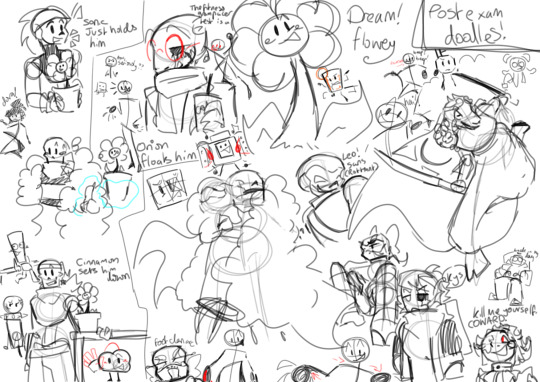
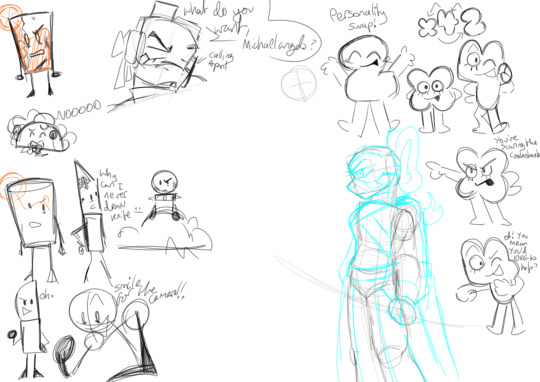


HEY GUYS!!
Sorry I've been so inactive lmao, GCSE's go wild. BUT GUESS WHO'S OFFICIALLY DONE WITH EXAMS!!!
I haven't done much art recently, but I'll try get into the habit of posting more of it now that I'm done with my exams ::D
#my art#undertale#undertale au#sans au#sans the skeleton#sans#sans undertale#art#doodles#inanimate insanity#but in doodle form#theres some exanimate insanity in there#or whatever the swap ii au is called#swap ii#two bfdi#x bfdi#four bfdi#animatic ab#lemoneons art
23 notes
·
View notes
Text
drew @/puppyrelp's exanimate insanity oj like two days ago .sick bastard

157 notes
·
View notes
Text
EI Saltjay (CW)
CW for Saltjay (even if it's swap Tacobow)
@puppyrelp
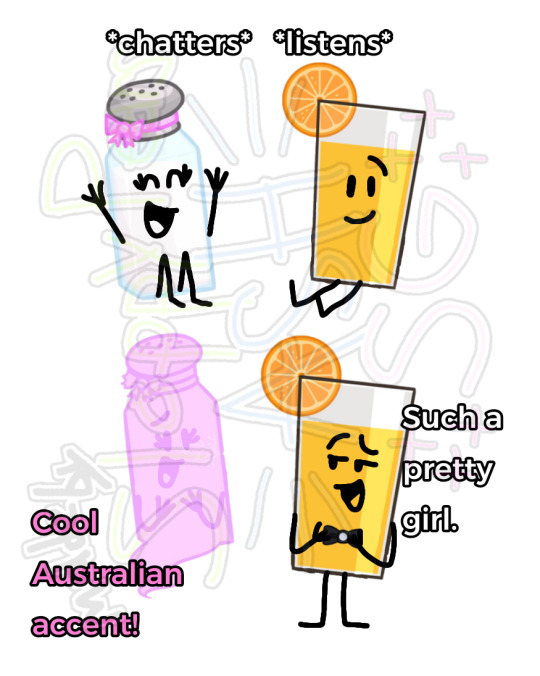
EI Salt and EI OJ.
Based on a Tacobow season 1/season 2 thing that I saw somewhere.
11 notes
·
View notes